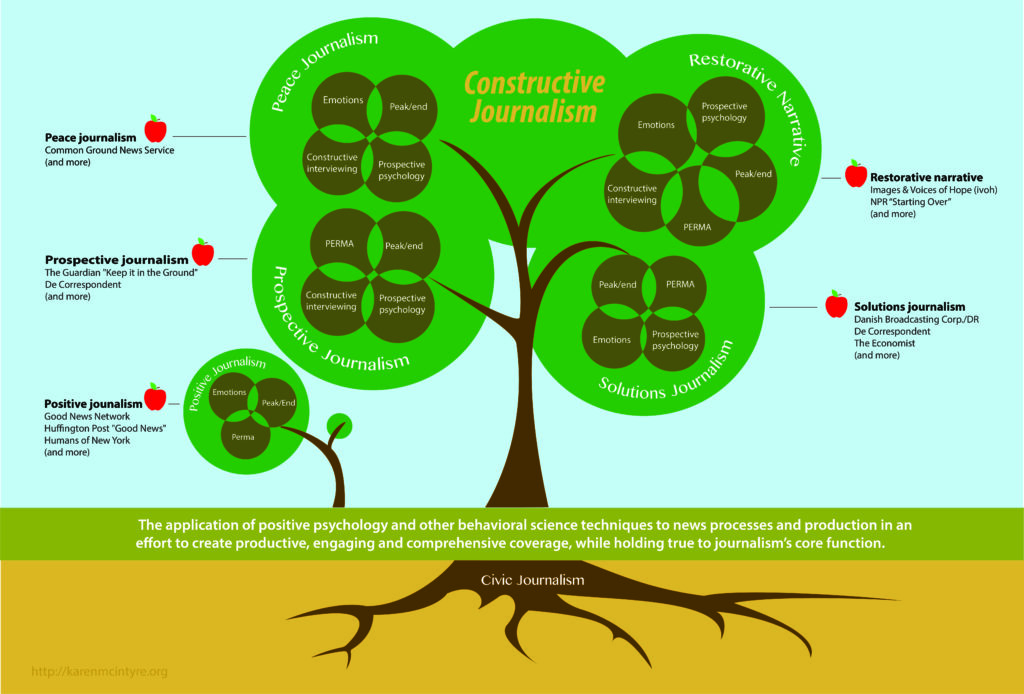
Home » Modules for Journalists » Showroom » Roots, role and impact » Handouts
A brief timeline of the constructive journalism movement:

Source: Karen McIntyre, Catherine Gyldensted and Joshua Smith
Constructive journalism shares features with other forms of journalism such as peace and conflict-sensitive journalism, and picks up elements from other types as well. Constructive journalism is a broad umbrella for a practice that is conscious about its impact and wants to use it in a responsible way.
There is still a limited amount of research on the effects of constructive journalism stories on audiences, although there is some, mostly from the US and Europe. The results of these studies have been encouraging.
The Keys to Powerful Solutions Journalism – University of Texas, Austin
The Center for Media Engagement set out in a 2019 study to determine how components of solutions journalism affect the way readers evaluate stories. It found that articles that included all components of solutions journalism had the following effects on readers:
More info: www.mediaengagement.org/powerful-solutions-journalism
Transforming Engagement – SmithGeiger (US)
A 2021 study by the consulting and research firm SmithGeiger found that solutions storytelling offers key benefits for journalists and news consumers across platforms and demographics. Solutions journalism outperformed the traditional approach on three criteria:
More info:
www.thewholestory.solutionsjournalism.org/the-top-ten-takeaways-from-the-newest-solutions-journalism
Constructive Journalism Pays Off – Grimme-Akademie (Germany)
This 2021 study by a German media research institute looked at how constructive journalism could support German media in a time of rapid transformation. Key findings include:
More info: www.constructiveinstitute.org/why-constructive-journalism-pays-off